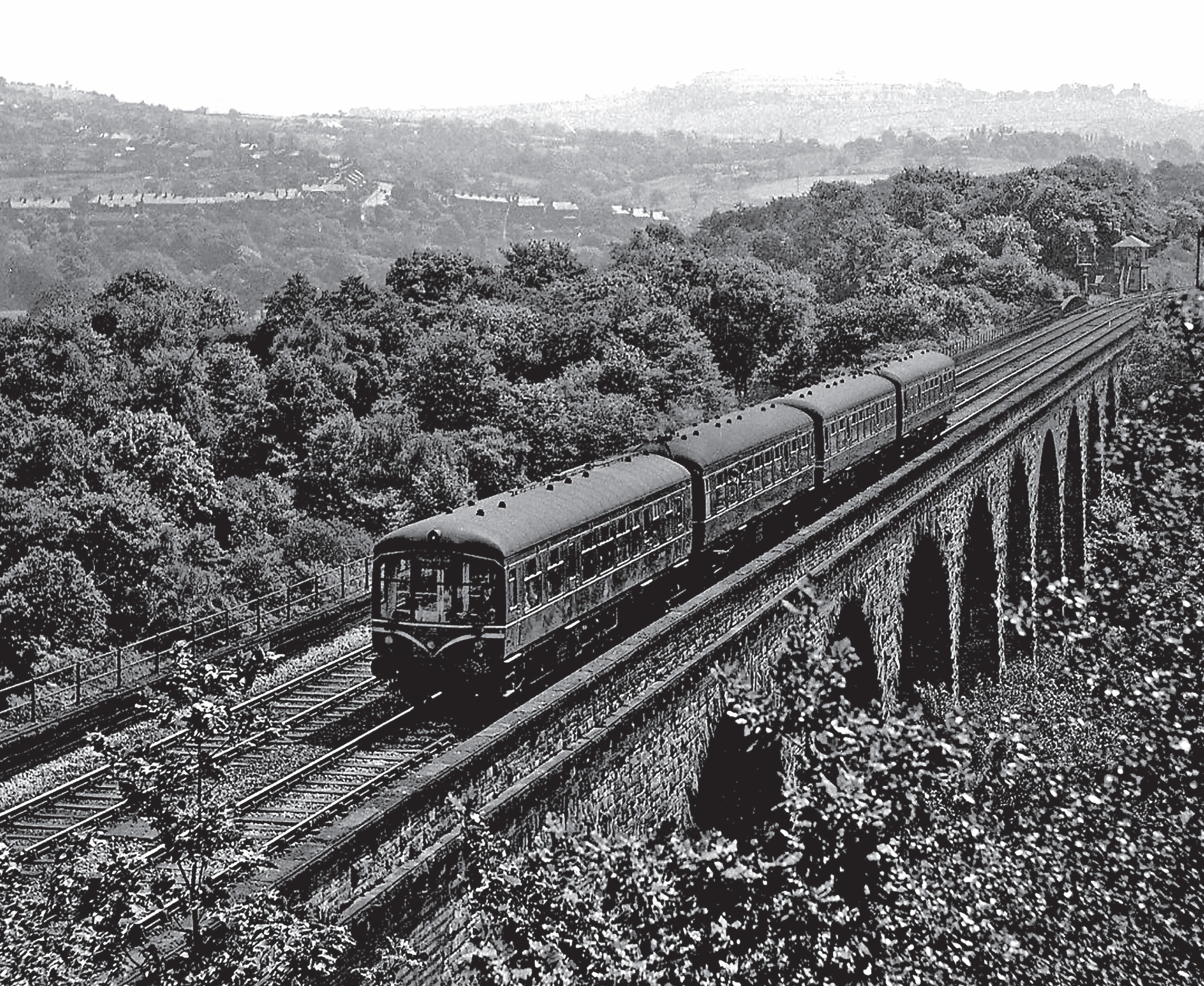The Eric Oldham Legacy Collection John Hillier





















 Foreword by Sir John Oldham OBE
Foreword by Sir John Oldham OBE




© Text John Hillier 2023 Images © Sir John Oldham
All rights reserved. No part of this publication may be reproduced, stored in a retrieval system or transmitted, in any form or by any means, electronic, mechanical, photocopying, recording or otherwise, without prior permission in writing from Silver Link Publishing Ltd.
First published in 2023
British Library Cataloguing in Publication Data


A catalogue record for this book is available from the British Library.
ISBN 978 1 85794 621 5
Silver Link Books






Mortons Media Group Limited
Media Centre
Morton Way
Horncastle
LN9 6JR



Tel: 01507 529535
email: sohara@mortons.co.uk

Website: www.nostalgiacollection.com






















Printed and bound in the Czech Republic
Foreword
Eric Oldham, my uncle, was a quiet gentle man, who left a significant footprint on the sand of life through his art and photography. After leaving school, Eric went first to art college but only for a short time before being forced to leave to help the family business – a small baker and confectioner shop in Hyde that had been started by his great great grandfather in 1834. He became a master baker, but in the words of the author of this book, John Hillier, was also a master photographer and master artist. Drawing on some 4000 negatives, most unpublished, John has taken some of the best to create a legacy for Eric highlighting not only the technical skill but also artistic eye that Eric showed in his documenting four or more decades from the 1940s onwards.
such things were possible. Eric kitted out with his trusty Leica, and me with his Voigtlander. In summer Eric would often join us on holiday, the locations determined by proximity to steam trains especially in the last days, and he and my father Kenneth, would negotiate day release to pursue their hobby. You will be getting the sense that I grew up weaned on steam trains. It would be correct. My father did many 16mm cine films with sound, now in the stewardship of the National Railway Museum. I content myself with a model railway and heritage lines to keep the flag flying.
Previous page: Eric lived close to the 1500 dc Manchester to She eld line via Woodhead and often photographed in the Longlandale Valley on the grades up to and from the 3-mile long tunnel that penetrated the Pennines in this image. Here Bo-Bo class
EM1 No 26041 glides downgrade near Valehouse with a train from She eld Victoria to Manchester London Road.
Eric never learnt to drive so all his locations were reached either through bus and train, a lift, or a bicycle if more local. Tuesday afternoons were half day closing for the shop and were often the excuse for a trip. During school holidays I used to be taken along and well remember walking to the lineside in rural locations near Retford, or the sheds at Crewe and Doncaster when
I want to thank Mike Bentley for the herculean task of collating the negatives, John Hillier for his sterling work in putting this book together, and also Peter Townsend and the team at Mortons. They have created a fitting tribute and legacy to Eric Oldham. It is a legacy which he would be surprised to see, but discretely delighted about in his humble way.
Sir John Oldham OBE
Contents
Platform Scenes
On Home Ground
Heading West
On Southern Metals
Northern Routes
Eastern Meanderings
At Rest
Tail Lamp
1
2
3
4
5
6
7
8
have been about 16 when I first heard about and subsequently met Eric Oldham who was to be my photographic mentor for many years. He lived in Hyde but although I lived in Marple Bridge at the time I travelled daily by train to Hyde Grammar School via the grandly titled Hyde Central Station, usually on one of the Derby Lightweight diesel units which were introduced on the Manchester to Hayfield services in 1957, the year before I started ‘commuting’!
These units o ered the opportunity to sit at the large windows either at the front watching the driver and the ‘the road ahead’ or at the rear. There were many features to admire on this journey including Marple North Viaduct which crossed the river Goyt some 125 feet below. The imposing aqueduct carrying the Peak Forest Canal ran alongside. The frontispiece shows one of Eric’s pictures of a couple of these beautifully designed two-car units crossing this fine viaduct. Was I on that train I wonder?
As our school playing field used to border the 1500 dc Manchester to She eld line the fence there became a regular haunt for those who, like me, preferred the sport of ‘train watching’’ to the usual sporting activities on the field and it would have been during one of those gatherings that I learnt from a local enthusiast at the fence that one of the photographers whose work appeared from time to time in Trains Illustrated (TI) lived and worked in the town and was a leading member of the Photographic Society there.

My parents had given me my first camera, a Kodak Brownie 127, to take on a school trip to the 1960 Rome Olympics. I returned with a few memorable but not very good pictures which caused me to want to improve my photography – and the equipment I was using! – as well as try to emulate the fine pictures in TI and elsewhere. I soon discovered that Eric had a baker’s shop and visits to the shop on Market









Street to buy an iced bun or two were soon on the agenda!

In truth it was a chance to attend meetings of Hyde Photographic Society, which provided the opportunity to meet Eric and subsequently get lots of valuable practical advice about techniques, films and how to develop them. I was also able to admire the large, mounted exhibition prints that he produced for Society Print Competitions and for various Exhibitions. Looking at them it was no wonder that the name ‘Eric Oldham’ could regularly be found engraved on winners’ cups!
Eric was an excellent teacher and enthusiastically gave me his time, tips and advice. He also gave me some of his old developing equipment which I put to good use having once convinced my parents that the bathroom would be returned to normal use after being blacked out and used as the darkroom, something that was essential in those pre-digital days. By then I was using my dad’s 35mm camera when with better results and, armed with a few of my own prints, I used to gingerly approach Eric for his comments. Looking back, I suspect, like all good teachers he chose his words carefully so as not to discourage a pupil so eager to learn!
Eric had joined the prestigious Railway Photographic Society in 1950, which meant that his own work was viewed and critiqued as his prints were circulated between fellow members, many of whose pictures appeared in print regularly. One of them, Maurice Earley, the RPS’s Secretary, had formed the Society in 1922 and it was his practice to vet the work of all prospective members to ensure that the high photographic standards achieved over the years by the Society did not drop. Eric was instrumental in suggested that I too should apply for membership and, after following the established vetting procedure, was admitted into the ranks of the RPS in 1964; perhaps
108 Market Street, Hyde.









without Eric’s guidance and endorsement my application to join its august ranks might not have succeeded. Once I joined our photographic discussions became more focussed and quietly competitive!










I soon began to realise that large format negatives were often preferable to 35mm films although great care was needed in processing both. Although Eric used a large format Voigtlander Bessa 2 camera producing 2¼” x 3¼” negatives, for much of his work his trusty 35mm Leica 3A was by his side and he was able to turn out amazing pictures from both film formats. Although the majority of his work was produced on black and white negative film, he also ran an occasional roll of 35mm colour transparency film stock through the Leica.
Eric had originally intended to take up an art-related career but in the event took over the family baking business and became a master baker instead. However, as his brush work was exemplary, he produced some outstanding pictures over the years and some examples of his work can be found within the pages of this book. As will be seen sometimes his paintings were faithful reproductions of scenes that he had photographed, although most were of images that he would have liked to have seen. He usually painted using watercolour or gouache techniques although oil was sometimes the medium he used.


Imust
Introduction
He was a Founder Member of the Guild of Railway Artists, having exhibited at its fledgling 1977 exhibition before the GRA was o cially formed in 1979 and was one of the few subsequently given Honorary Membership in recognition of all that he did for the Guild. His work was also displayed, at the National Railway Museum in York, and has been used on record sleeves (Argo Transacord) and elsewhere.
Eric’s craftmanship was also seen in a large shed in his garden where he painstakingly built a superb 00-gauge model of his beloved East Coast Main Line where a number of his favourite engines, the A3 4-6-2 ‘racehorses’ were able to exercise themselves! A favourite was 4472 Flying Scotsman which featured in a TV film produced by his younger brother Kenneth Oldham and which now resides in the NRM archives. Kenneth, an avid enthusiast himself, records in his book Steam in Wartime Britain (Allan Sutton 1993), that they used to join their father on Sunday morning excursions with Hyde Fishing Club to Poynton, Macclesfield or Bollington which provided some locations for Eric’s pictures in later years. That book mentions the dark and sombre atmosphere in the booking-hall of Hyde Central Station which I was also to experience some time later!
Ken mentions that both brothers acquired ‘new Coronet box cameras’ in 1934 when they set out to record pictures of the old GCR line around Hyde Junction and on up towards the tunnels at Woodhead. They also used to travel from Godley Junction to Doncaster (juvenile fare was around 9p in today’s money!) where they became transfixed by the Pacifics which is undoubtedly where Eric’s love of Gresleydesigned engines emanated from. Interestingly that book also records that both he and Eric attended Hyde Grammar School and that they too took up suitable vantage points by the sports field fence just as I did many years later!
Eric’s work meant that his own photography was often limited to ‘half days’ when his shop was closed, or to Sundays and holidays; as he did not drive that too hampered his opportunities to get out to lineside locations. He did travel to locations with his brother and colleagues from
the Manchester Locomotive Society, of which he was a member, from time to time and I was occasionally his chau eur once I passed my driving test in 1964.
Unfortunately, although Eric was a perfectionist in so many ways, his record keeping left a little to be desired and so it has not been possible to accurately date or locate some of the images seen in the following pages of this book. Any errors are mine!
Sadly Eric passed away in August 2008 (87) but I did not find out until sometime later when I began to enquire about his photographic collection, fearing that it might have been lost. I need not have worried. I heard a whisper that it was in the hands of his nephew, Sir John Oldham OBE, who lived in Glossop. I made contact and was pleased to learn that the collection of priceless negatives and pictures was in safe hands and that John also had railways in his blood which, as he was a distinguished medical professional, he must have realised at an early age! Since then, we have been in regular contact as we both felt that the work of his uncle deserved a wider audience. This book is the result.
It features a wide collection of locations and motive power with pictures by Eric on each of the BR Regions from the 1940s until the 1980s; most have not been reproduced before.


Thankfully, in addition to his pictures I have been able to include a couple of articles that he wrote about his photography. One appeared in the 1957 book How to Photograph Trains by fellow RPS Member J.D. Mills and explains how he took the series of pictures of the Pennine Pullman which are reproduced in this book. I have heard it said that one of them - which also features on the book sleeve - is one of the best shots ever taken on a locomotive taking water on the move. The other is a piece that he wrote for me in 1968 which appeared in the supplement I produced for the Glossop Chronicle in connection with the opening of Dinting Railway Centre in April that year.
I owe Sir John Oldham a great debt in that he has given me carte blanche in producing this book as a celebration of the legacy that Eric left and for o ering any surplus revenue from its sale to support railway heritage and charitable projects.
Thanks are also due to our publisher, Mortons Books, and to my good friend Peter Townsend from Slip Coach Publishing Services Ltd, to Mike Bentley from Buxton who spent many hours indexing and tabulating the negative collection, and of course to Ann my long-su ering wife for allowing me time to pursue my ongoing interest in railway photography with all that it entails!
John Hillier. Barrowden, Rutland. February 2023 An example of one of the record



























6
The Eric Oldham Legacy Collection
Edge Hill Cutting.
sleeves.
Chapter 1: Platform Scenes


























Arailwayplatform is such a fascinating – and essential–place for anyone who has to travel and provides so much of interest for anyone familiar with rail operations in their broadest sense. It also o ers the photographer something very special in that there are so many opportunities to capture the broader scene of the individual station including railway architecture, locomotives, people and so much more.
It’s likely that anyone who has had any interest in railways will have spent many hours on platforms watching train movements and possibly also making a record somehow of what they have seen. Nowadays this is often done digitally but in the period covered by the pictures in this book a pencil and notebook were the order of the day plus a copy of the ubiquitous ‘Ian Allan Combined Volume’, which was where numbers would be underlined after any trip and hence provided the essential reference document.




The most popular stations would be those where lines from distant parts met, thus o ering the opportunity to see locomotives and stock from di erent regions or sheds; there was always the possibility of something unusual turning up!
One of Eric’s favourite stations was Doncaster as it was easy for him to travel to from Hyde via the Woodhead route and so he went there fairly often over the years. He would have reacted as others will have done when the cry of ‘streak’ was heard, which signified to everyone that an A4 had been seen in the distance and was about to possibly thunder along the centre road!
Eric was on hand to record the rousing departure of Great North of Scotland Railway 4-4-0 No 49 Gordon Highlander from Glasgow Central Station on 19 April 1965. There were two trains and Eric was there to photograph both (see page 15). This engine was withdrawn in 1958 as No 62277 and subsequently ran in GNOSR livery for several years.

The Eric Oldham Legacy Collection




















8
York Station was a mecca for train watchers and here a family group are enthralled by A4 4-6-2 No 60034 Lord Faringdon as it waits for the ‘o ’ from platform 9 with a northbound express from London Kings Cross.
Steam on the Southern ended on Sunday 9 July 1967 and Eric was at the western end of Southampton Central Station when he took this shot which shows a group of enthusiasts gathered as MN 4-6-2 No 35003 Royal Mail takes water after hauling the 08.35 Waterloo to Weymouth train, its last ever working from London. Later that day 35003 hauled the 17.49 Weymouth to Bournemouth train, its last run before being withdrawn.


















9
Platform Scenes
The Eric Oldham Legacy Collection



















Although there are a number of di erences between this painting and his photograph of No 46257 about to depart from Liverpool Lime Street seen on the next page, it is overall a very faithful reproduction. Surely a bit of ‘artistic licence’ is allowed from time to time! This is an example of Eric choosing one of his own pictures to base a picture on rather than painting a scene that he would have liked to have witnessed.
Opposite: Coronation 4-6-2 No 46257 City of Liverpool prepares to leave Liverpool Lime Street with a southbound express. Immediately ahead of the loco on departure is a gruelling 1¼ mile climb at 1 in 93 through Edge Hill cutting and tunnels.

10
















11
Platform Scenes
The Eric Oldham Legacy Collection




















12
In a scene very reminiscent of one of the Southern Railway’s most famous posters, unrebuilt BB 4-6-2 No 34072 257 Squadron waits to leave London Victoria’s ‘Golden Arrow’ platform probably on a boat train to Folkestone Harbour or Dover Marine. 34072 ran until 1964 before being taken out of service. However, it was purchased from Barry and restored to running order.
Platform Scenes




















13
Class C13 4-4-2T No 67425 was built at Gorton Works, Manchester in 1904 for the Great Central Railway and is seen getting the ‘right away’ at the eastern end of Manchester London Road Station in the 1950s. A number of appropriately dressed young ‘spotters’, notebooks in hand, crowd around the platform end and the GCR signal box. 67425 was scrapped in 1956
The Eric Oldham Legacy Collection

























14
The Caledonian Railway 4-2-2 No 123 was built in 1886 and took part in the ‘Race to the North’ in 1888 running regularly between Carlisle and Edinburgh in record times. It ran until 1935 but in 1958 was restored to working order and CR livery and continued hauling special trains until 1965. On 19 April that year it hauled some “Scottish Rambler” trains and was photographed by Eric leaving Glasgow Central (left) and Edinburgh Princes Street (right). Eric had arranged with the driver to have some dramatic smoke on departure.
Platform Scenes




















15
On 9 September 1956 The Stephenson Locomotive Society organised a railtour from Birmingham Snow Hill to Swindon Works via Hereford and Severn Tunnel Junction with the last Churchwood GWR ‘Star’ class 4-6-0 No 4056 Princess Margaret. Seen here at Snow Hill 4056 was built at Swindon in 1914 and scrapped there in 1957.




















16
The Eric Oldham Legacy Collection
K4 2-6-0 No 61995 Cameron of Lochiel at Glasgow Queen Street Station on 18 June 1960 at the head of an excursion to Fort William and back. Eric has successfully captured the atmosphere at the end of the platform as the engine waits for its journey over the demanding West Highland line.
Platform Scenes



















There’s nobody around to witness Drummond T9 4-4-0 No 30283 backing its train into Southampton Terminus station in the early 1950s. While the railway takes up Eric’s interest here, no doubt the fact that the funnels of the Cunard liner Queen Elizabeth were visible would have been something that attracted him to this vantage point.

17
Amongst the platform-end paraphernalia Eric would have wanted to record was this fine GNR water column and, with careful positioning, the signals indicated that A4 4-6-0 No 60028 Walter K. Whigham, in spotless condition, could continue north from Peterborough with a Leeds bound train from London Kings Cross during 1958.





On 28 April 1963 and with a few minutes to go before its scheduled 9.15 departure time, Eric ventured onto the track at Birmingham Snow Hill Station to record King 4-6-0 No 6018 King Henry VI preparing to leave with the “Farewell to the Kings” tour to Swindon Works and back. This engine took part in the 1948 Locomotive Exchange trials on the LNER between London and Leeds.


















18
The Eric Oldham Legacy Collection
Platform Scenes


















19
A view at the northern end of the platform at Longsight where a fine LNWR signal gantry spanned the tracks and controlled trains heading towards Manchester London Road station. The extensive sidings and the steam shed (9A) can be seen. A ‘Crab’ 2-6-0 is engaged in shunting duties as a Birmingham Railway & Carriage Works 3-car dmu approaches with a Manchester to Stoke-on-Trent service. This was a location much favoured by a group of active photographers in the area and one which Eric used fairly often.
The scene at Crewe Station in the early 1980s when 370 003 captures the attention of waiting passengers. This unit formed part of the three ‘tilting’ Advanced Passenger Train sets (APT-P) which operated trials over the WCML in the late 1970s. Although unsuccessful they were the forerunner of today’s tilting trains – including the Pendolino WCML units – introduced around the world alongside the highly successful HST units in the UK. The APT-P sets ran in WCML service between 1981 and 1986 when they were withdrawn. Unit 370 003 has been preserved.


















20
The Eric Oldham Legacy Collection
Platform Scenes



















The driver of Deltic ‘prototype’ DP2 has captured the attention of an inquisitive youngster as the engine, built in 1962, pauses at York with an ECML express. The picture was taken following its 1965 major overhaul when it appeared in two-tone green livery for the first time. It was involved in a crash at Thirsk in July 1967 and never ran again.

21
































































































































































































